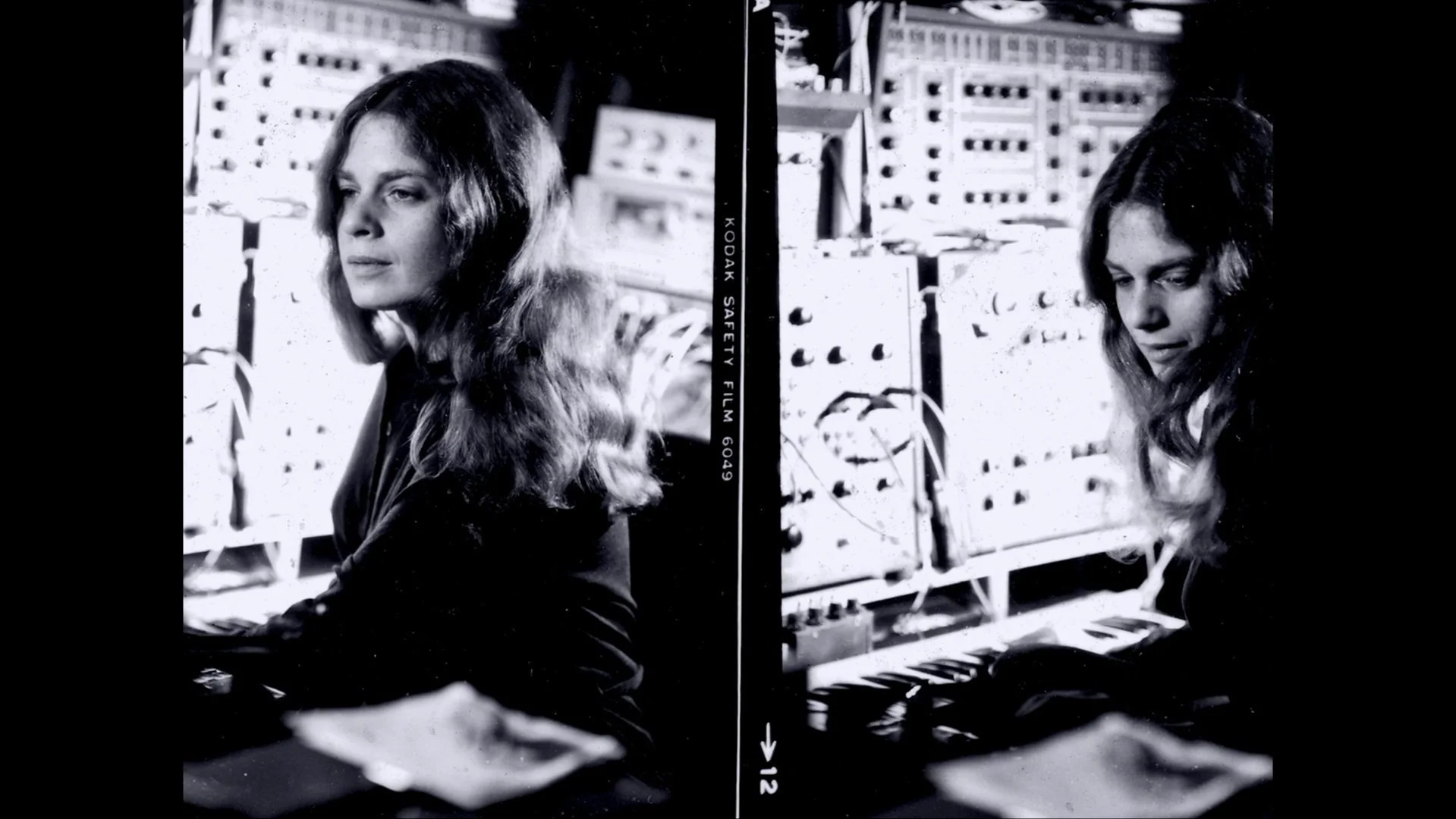Have you watched Lisa Rovner’s documentary Sisters with Transistors? It’s every bit the revelation you would expect from this trailer. Witness the great leaps that a league of extraordinary women took in experimental music as far back as the 1950s.
As narrator Laurie Anderson says, these artists didn't just aim to make new compositions, they set out to change the way we listen, regardless of acclaim or exclusion. Largely lone explorers though kindred spirits, they used sound waves and frequencies as their malleable orchestra, transmitting new ideas and possibilities. In turn, their pieces became our transporters.
I sat there stunned, unable to fathom how this music was being made or what it was doing to me, regardless of any explanations offered. Every track, whether it was by Daphne Oram, Wendy Carlos, Suzanne Ciani, Laurie Spiegel (pictured above), Delia Derbyshire, Maryanne Amacher, Bebe Barron (with husband Louis), Éliane Radigue, Pauline Oliveros or Clara Rockmore still feels like drifting giddily into a strange new world.
You may know some of these names through little flecks of recognition they have been granted. Derbyshire created the original Dr Who theme. Oram was a co-founder of the BBC Radiophonic Workshop. Seeing her demonstrate Oramics, where notations on 35mm film were converted into synthesised music, was magic. Show that to kids in school.
Barron co-created the score for Forbidden Planet though it was brushed off as "sonic tonalities" in the credits. Ciani was the first woman to score a Hollywood film (The Incredible Shrinking Woman) and a go-to composer in the commercials world, making a sonic signature for the Coca-Cola bottle. We see her giving Letterman a demo on his show. Spiegel worked at Bell Labs in the early 70s and went on to develop Music Mouse, which turned the Mac into a musical instrument.
Carlos was instrumental in conjuring the foreboding mood at the beginning of Kubrick's The Shining and A Clockwork Orange – you can read her memories of working with the fastidious director here – as well as Tron's virtual wonder. While her 1968 album Switched-On Bach defied the parameters of classical music and brought the Moog to the masses.
I discovered Pauline Oliveros through her writings on sonic meditations (instructions for listening as a fully embodied experience, as deep contemplation, as healing). And yet, ask me about early electronic music before watching Sisters with Transistors, and the first names to pop out would be John Cage, Brian Eno or Raymond Scott, maybe Sun Ra. On the evidence of this documentary, that's not right.
Important to note the collaged, almost hallucinatory style of visual presentation. Archive footage of the changing times coming in and out of our field of vision as each sister has their moment. (The bit when Maryanne Archer has Thurston Moore cowering with hands on ears as she blasts him with sound is just brilliant.) This treatment certainly made me more willing to forgo expectations and hop on different wavelengths, riding its gentle pulse. You're in the hands of a director who not only knows their material. They really feel it. Bravo, Lisa.
Final thought: I would devour a series with long episodes devoted to each of these remarkable individuals.
Also, here’s a Curzon playlist of songs by the artists featured in the documentary.
While you’re at it, listen to Marta Solagni on the role of the sound designer in a film that’s already blessed with a galaxy of wondrous music.
And check out the Sounds Good video on Wendy Carlos. Well researched and presented.

